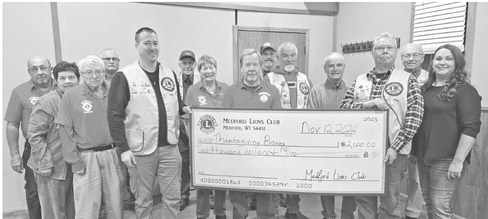Soil Sound Off: Don’t yawn about your lawn
By Matthew Oehmichen, Agronomist
When my mom fires up the lawn mower and later I hear one of the kid’s toys explode into plastic shrapnel, I know that summer time is here. Lawns do not seem unique, but whether it’s the front lawn or back-yard, the labor for keeping the lawn looking green and neat is abound: seeding, overseeding, weeding, mowing, nutrient management, etc. Keeping up a fetching patch of grass can be a borderline obsession for some. When I was living in Kenosha I had a neighbor that would wait until the dead of night and sneak into yards around the block to spray dandelion weeds so that he wouldn’t get any weed seeds blown over into his yard. Lawns are a slice of Americana that is worth exploring, and I would like to take you, humble reader, along with.
It is undeniable the impact of a green yard to a home owner’s psyche when we consider the activities that are associated with a lawn such as backyard grill-outs, siblings tossing the football around, or posting “VOTE FOR_______” signs at election season. So, having a good-looking lawn in America’s heartland should come as no surprise, right? The real surprise is that a pampered lawn isn’t American at all, but instead a tradition of aristocrats and monarchs in Western Europe (mostly England and France). That’s right; when you are mowing the lawn on the Fourth of July you are doing it alongside the likes of King George instead of George Washington. But don’t worry, you are not killing the American Dream by having a lawn.
The word lawn comes from “launde” which means “a grassy woodland clearing” and the idea to keep the grass cut routinely didn’t take root in America until the 1800s. By the mid 1800s, after the first lawn mower was invented, the concept of a lawn went beyond wealthy landowners and began to hit more American families. A genuine American yard was mostly utilitarian, used for livestock grazing and growing vegetables. Or they would just let ‘whatever’ grow and have farm animal, like a goat, chew it down once and awhile. If you go to Washington, D.C. all the federal buildings have lawns covered with an arrangement of “weeds” that they mow instead of turf grass. It’s not a reflection of their use of taxpayer money, but instead to honor that tradition (minus the grazing goats of course).
Lawns can be considered the most interacted landscape on a homestead. It serves as the vessel that allows us to navigate our, albeit small, own patch of ground without getting our feet too dirty (unless you forget to pick up after the dog perhaps) and just be outside while standing on comfortable grass. The compilation of a mix can be traditional, basic, or creative. The most popular grass species are turf Kentucky Bluegrass, which gives lawns that deep green almost blueish hue. Anywhere between 40-60% of the mix is Bluegrass, followed by 20-25% Perennial Ryegrass, and some fescues (such as Creeping Red Fescue). It isn’t unusual to find some Annual Ryegrass in a blend, which gives a fast hardy establishing grass with a low cost, that often can re-seed itself. Sometimes you can get creative, by adding clovers to fill gaps and helping fight against weeds while providing nitrogen to the grass.
For best kept lawns, weed control and watching fertility will make the difference. To take care of Creeping Charlie, thistle, and other unwanted broadleaves use a broadleaf weed killer, such as 2,4-D and apply in the spring and possibly fall. De-thatching (where you basically comb dead plant material off the yard) is a big help as well. It helps increase water infiltration and control disease. For fertility, nitrogen and potassium are important. Nitrogen is universal for plants because it helps the plant produce chlorophyll (the plant turns sunshine into energy) and potassium strengthens cell structure and plant tissue and helps increase carbon dioxide/oxygen exchange (plants will breathe like a wheezing kid if potassium is low). Sulfur is another important nutrient because it helps plants pull in more nutrients in tough soil conditions and enhances chlorophyll production.
Fertilizer rates should stay small, 1 lb. of nitrogen per 1000 sq. ft., applied once 20-30 days max. To put that in perspective, that is 2 lbs. of Urea tossed in a 30ish ft. x 30ish ft. area once a month. It is important to remember turf grass has a small root mass and small tissue production so it can only take up so much fertilizer per application. Over applying fertilizer risks leaching and nutrient runoff.
One more helpful tip, and perhaps the biggest one: 3-3.5 inches is the range to mow your grass. When you cut grass too low it puts more stress on the plant (needs to pull in more nutrients and water to create more tissue) that makes it harder for the lawn to survive extreme weather conditions, particularly heat in July and August.
I would like to thank Brett Ewert for being a resource for this week’s edition, who serves as the main grounds-keeper at Meadowview Golf Course.


